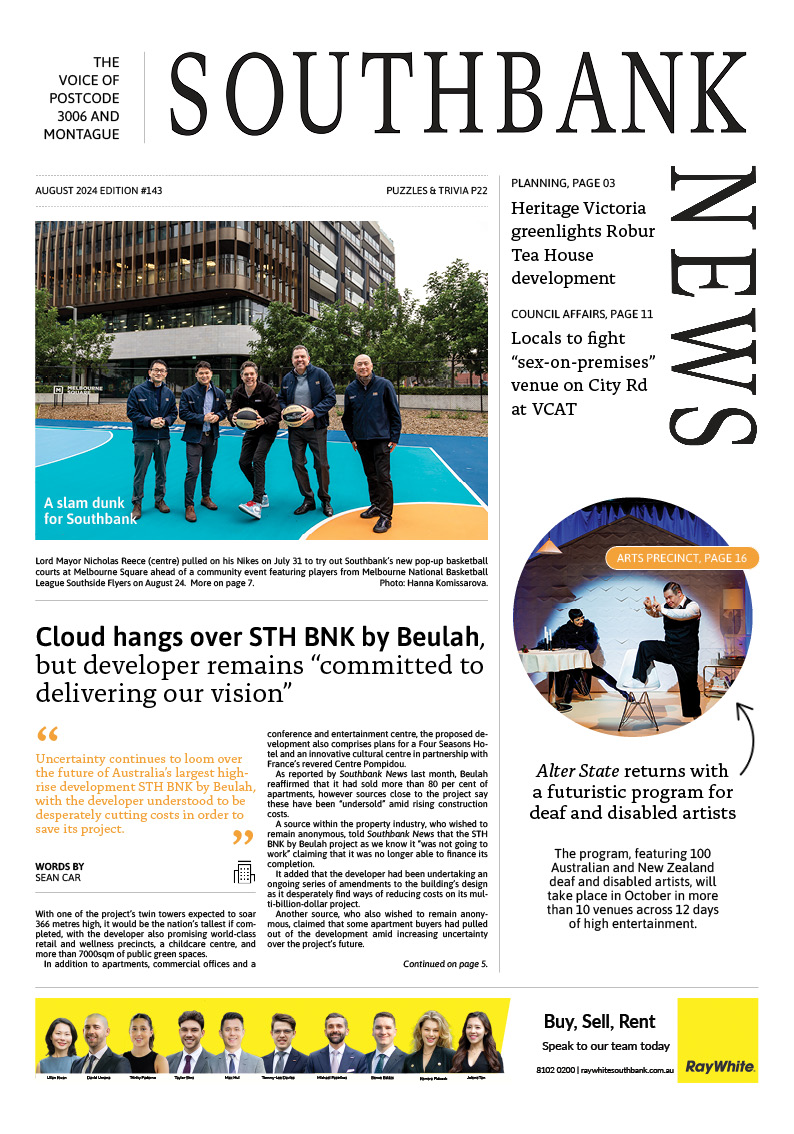Trees of Southbank
One of the joys of living in Southbank is sharing the many trees in the environment – part of the 70,000 trees that make up the urban forest of Melbourne.
The highlight is the multi-laned promenade of St Kilda Rd, the “noble thoroughfare” with its mix of tree varieties, such as poplars, planes, elms, and West Australian flowering eucalypts, which form the majority of the trees.
But the most outstanding trees are the many Canary Palms, including the eight mature trees situated at the entry to the Victorian Barracks.
How did Canary Palms come to be so popular and prevalent in Southbank?
They are universally acclaimed and present a beautiful appearance, and come in a variety, including Phoenix, date palms, dwarf palms, cabbage palms, and fan palms.
Canary Island date palms are long-lived and have been planted and cultivated by private gardeners and public bodies for more than a century.
But there have also been many controversies about these trees. In 1925 many trees, shrubs and palms were removed to provide for the installation of roadside poles to enable the electrification of the tramways network, which replaced the underground network installed in the 1880s.
It was an action regarded as “deplorable” by many residents (including those in the mansions of merchants in their prestige addresses) but deemed there can be no progress without sacrifice.
Many locals exhorted authorities to “plant Australian trees”, such as popular Australian varieties like beautiful evergreen flowering eucalypts rather than the spiky palms from other countries.
In 1946 it was proposed that trees on the edge of the city should be removed to make car parking safer and protect Melburnians from the remote chance of being hit by a palm frond.
The most recent controversy is around the planting of nine palm trees outside the ABC building in Southbank Boulevard, supplemented by about 50 canopy trees.
There have also been a number of beautification schemes, aimed at hiding unsightly buildings from the public eye, such as factories and “eyesores” in Southbank around what was Sloss St, later subsumed by the National Gallery of Victoria.
Walking past the row of palm trees outside Victorian Barracks continues to provide residents of Southbank with joy and hopefully the trees will last for another century. •

Heritage Victoria greenlights Robur Tea House development







 Download the Latest Edition
Download the Latest Edition